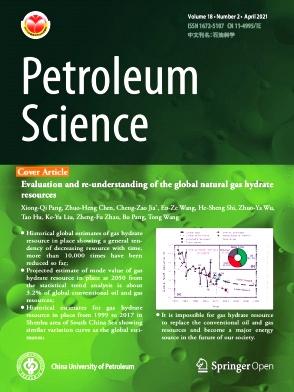Unraveling the corrosion behavior and corrosion scale evolution of N80 steel in high-temperature CO2 environment: The role of flow regimes
IF 6
1区 工程技术
Q2 ENERGY & FUELS
引用次数: 0
Abstract
During CO2 transportation and storage, metal equipment such as oilfield pipelines suffers from severe CO2 corrosion, especially in harsh downhole injection equipment. In this study, we investigated the corrosion behavior of oil well tubing in a high-temperature, high-pressure (HTHP) CO2-containing environment. The evolution of the corrosion scale was also examined under different flow regimes. The results reveal a lower corrosion rate at 150 °C compared to 80 °C under different flow regimes, with localized corrosion intensifying as temperature and rotational speeds (vrs) increase. The temperature also induces the corrosion scale conversion of aragonite-type CaCO3 (80 °C) to calcite-type CaCO3 (150 °C). Specifically, the variation of the corrosion rate and the corrosion scale evolution can be attributed to the vortices within the reactor. The intact vortex cells enhance mass transfer while also promoting nucleation and growth of CaCO3. However, when vrs exceeds the critical Reynolds number, the vortex cells are disrupted, resulting in viscous dissipation and a reduced corrosion rate.
求助全文
约1分钟内获得全文
求助全文
来源期刊

Petroleum Science
地学-地球化学与地球物理
CiteScore
7.70
自引率
16.10%
发文量
311
审稿时长
63 days
期刊介绍:
Petroleum Science is the only English journal in China on petroleum science and technology that is intended for professionals engaged in petroleum science research and technical applications all over the world, as well as the managerial personnel of oil companies. It covers petroleum geology, petroleum geophysics, petroleum engineering, petrochemistry & chemical engineering, petroleum mechanics, and economic management. It aims to introduce the latest results in oil industry research in China, promote cooperation in petroleum science research between China and the rest of the world, and build a bridge for scientific communication between China and the world.
 求助内容:
求助内容: 应助结果提醒方式:
应助结果提醒方式:


